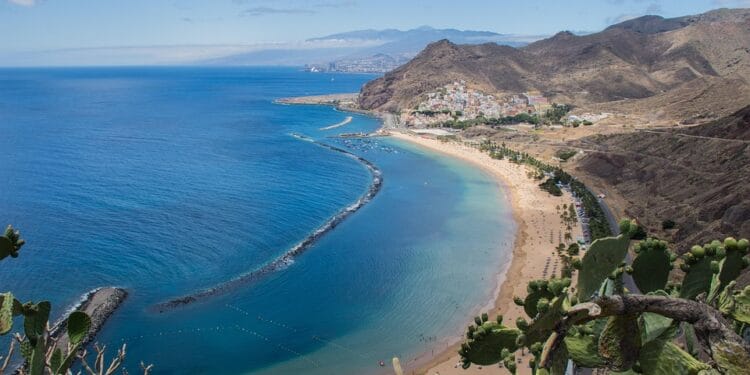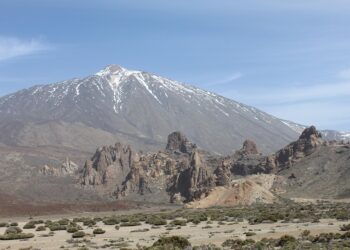If you’ve ever gazed out at the ocean and thought about the wonders that lie beneath the waves, you’re certainly not alone. For many, witnessing the majestic dance of whales and dolphins is a bucket-list experience that’s hard to top. And guess what? Tenerife, one of the stunning Canary Islands, is a prime spot for this once-in-a-lifetime adventure. So grab your sunhat and shades, because we’re diving deep into the magical world of whale watching in Tenerife!
Why Tenerife?
Tenerife isn’t just famous for its striking beaches and vibrant nightlife; it’s also a hotspot for marine life, particularly cetaceans. The waters between Tenerife and La Gomera are home to over 30 species of whales and dolphins. That’s right! You could quite literally run into these gentle giants or their playful friends during a day out on the water.
The Geography
The unique underwater geography around Tenerife creates perfect conditions for these magnificent creatures. The deep waters and narrow channels make it an ideal feeding ground. Plus, in winter months, migratory species like the humpback whale can be spotted passing through. Isn’t that thrilling?
Best Time to Go
Timing is everything, isn’t it? Although you can spot whales all year round, the peak season is from March to June—that’s when the chances are at their highest, and the weather is just perfect. Don’t forget to bring your camera—trust me, you’re going to want to capture these memories.
The Local Species
Let’s put a spotlight on some of the most common species you might encounter:
- Pilot Whales: Friendly and often found in groups, they are the stars of the show.
- Bottlenose Dolphins: Known for their playful nature, they might just put on a little show for you.
- Sperm Whales: These giants are the largest toothed predators on the planet. Spotting one is like finding a needle in a haystack, but oh, the thrill!
- Fin Whales: Sleek and magnificent, they can grow up to 27 metres long!
Choosing the Right Tour Operator
Let’s cut to the chase—choosing a reliable tour operator can make or break your experience. Look for those who prioritise sustainability and respect for marine life. It’s essential to ensure that the company adheres to ethical whale watching practices.
Tips for Selecting a Tour
- Check Reviews: Websites like TripAdvisor or Google are your best friend.
- Certification: Ensure the operator is certified and follows local regulations.
- Boat Size: Smaller boats can offer more intimate experiences, while larger vessels might provide more stability.
- Guided Tours: A knowledgeable guide can enrich your experience with interesting facts and stories.
Preparing for Your Adventure
So you’ve booked your tour, and the excitement is palpable! But before you set out, a little preparation can go a long way.
Packing Essentials
- Sunscreen: Trust me; you don’t want to end up looking like a lobster!
- Binoculars: For the ultimate close-up view of those magnificent creatures.
- Camera: Don’t forget extra batteries and memory cards.
- Comfortable Clothing: Layers are your friend; it can get chilly on the water.
What to Expect
Let’s be honest; the thrill of seeing a whale is something you’ll never forget. Here’s a sneak peek of what you can expect:
- The Excitement: Spotting a dorsal fin breaking the water or a tail slapping against the surface is enough to make your heart race.
- The Silence: There’s a hushed awe that falls over the boat when a whale surfaces, reminding us how small and interconnected we really are.
- The Sway of the Boat: As you watch, you might feel the gentle rocking of the boat, adding to the surreal atmosphere.
Frequently Asked Questions
-
How long are whale watching tours?
Tours typically last between 2 to 4 hours, depending on the operator and the weather conditions. -
Is whale watching suitable for children?
Absolutely! Most tours welcome families. Just double-check with the operator to ensure they’re equipped for younger guests. -
What if we don’t see any whales?
Many operators offer a “whale or no pay” guarantee, so always read the fine print. However, keep in mind that these are wild animals, and sightings aren’t guaranteed. -
Is it safe?
Yes, whale watching in Tenerife is generally safe, but always listen to the crew’s safety briefings before heading out.
Final Thoughts
Whale watching in Tenerife is more than just a boat trip; it’s an opportunity to connect with nature and witness some of the planet’s most awe-inspiring creatures. So, whether you’re a seasoned sea lover or just looking to add a little adventure to your holiday, make sure to carve out some time for this unforgettable experience.
As you gaze out at the horizon, let the excitement wash over you. Who knows? You might just find yourself planning your next trip to do it all over again! So, are you ready to make some unforgettable memories?
Happy whale watching! 🐋✨
















